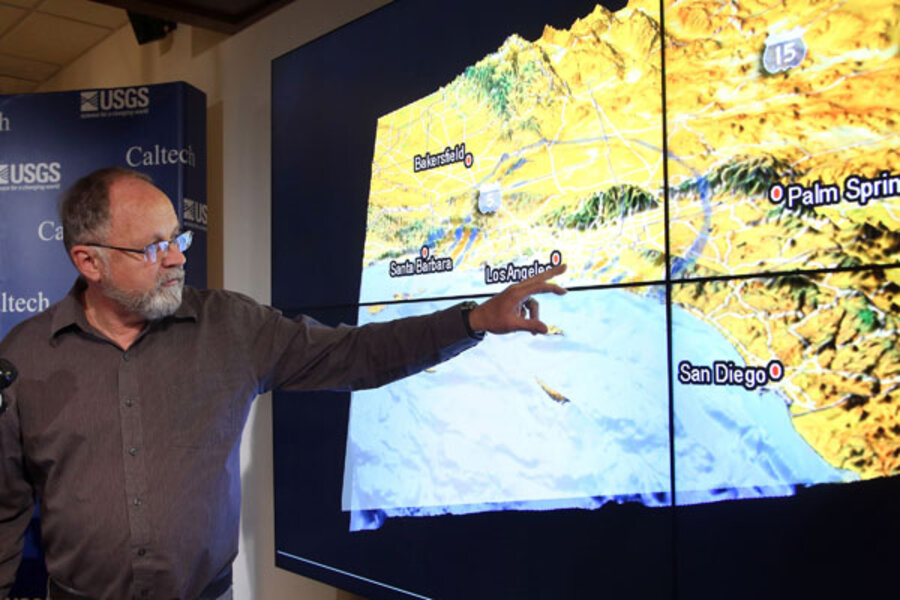Los Angeles earthquake: 4.4-magnitude temblor 'a rude awakening'
Loading...
| Los Angeles
Many Angelenos were rousted from bed by a 4.4-magnitude earthquake at 6:25 this morning. But the "Shamrock Shake," as it has been dubbed, caused little damage. At least six smaller aftershocks have rumbled through the densely populated neighborhoods at the heart of the Santa Monica mountain range where the temblor was centered, with the largest clocking in at 2.7 – again, causing little destruction.
Nonetheless, Mayor Eric Garcetti has been quick to call the shaker, “a rude awakening.”
This was one of the largest quakes to hit the Los Angeles region since the 1994 Northridge quake, which killed 57 people and caused more than $20 billion in damage, according to scientists at the California Institute of Technology in Pasadena. The science of Monday's quake is still being sorted out.
Early analysis suggests that the quake came from one of a number of known faults beneath the Santa Monica mountains, though it is not clear which, says Chris Wills, a geologist with the California Geological Survey in Sacramento..
For residents of Los Angeles, the most urgent question is whether this quake is a foreshock of a larger quake in the near future. The likelihood of that is very low, and “it will diminish quickly over the next few days,” says Dr. Wills.
The science community across the state hopes that Monday's quake can serve as a teachable moment, particularly in the 20th-anniversary year of the Northridge disaster. “Every time one of these happens, people get interested in earthquakes and that is a good thing from a preparedness standpoint,” says Wills.
“Your alarm clock goes off every morning, but these do not happen that often,” he says, noting that when they do, “they remind us where we live and what we ought to do.”
That list includes simple actions such as grab-and-go kits with basic necessities, as well as the creation of a family communication and evacuation plan, in addition to longer-term efforts such as retrofitting old buildings. “Many of those beautiful homes in the Los Angeles area are not up to date and could not withstand a major quake,” notes Wills
In a report pegged to the Northridge anniversary, scientists from the US Geological Survey and Caltech concluded that many structures built before 1994 are vulnerable.
"We're not saying that every building constructed before 1994 is going to collapse in an earthquake," said study co-author Thomas Heaton, a professor of geophysics and civil engineering at Caltech, in a statement. "We're saying that buildings continue to be in use that pose a greater risk of physical injury and financial harm than is necessary.”
Pre-1994 structures with fracture-prone welds are most vulnerable, the study notes. The most tragic damage in the Northridge quake came from soft structures not properly strengthened against major events.
“It’s very easy to put off these larger, somewhat abstract events, such as The Big One,' ” says Wills. “Not every property owner has the financial resources to do what needs to be done to protect their property against a large quake.”







